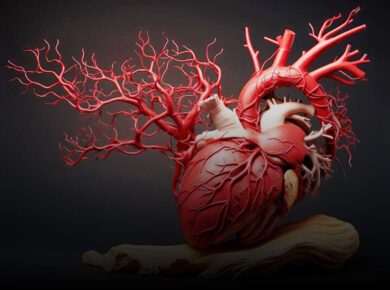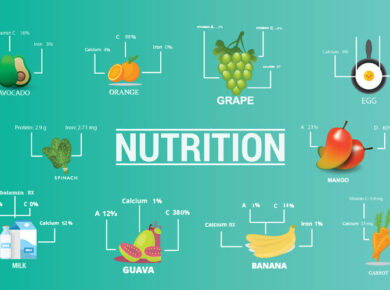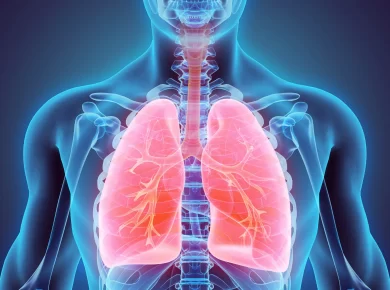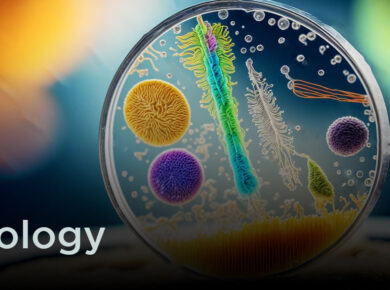Important terms in Genetics
- Factor: the unit responsible for the inheritance and expression of a particular character. Now replaced by the term gene.
- Gene: It is particular segment of a DNA molecule which determines the inheritance and expression of a particular character.
- Alleles or Allelomorphs: Two or more alternative forms of a factor or a gene are called alleles. For example, in pea plant, the gene for producing seed shape may occur in two alternative forms: round (R) and wrinkled (r). Genes for round and wrinkled seeds are alleles of each other.
- Trait: The expressed character, e.g. color of flower, shape of seed etc.
- Dominant trait: Out of the two alternating forms (allelomorphs) of a trait, the one which expresses itself in a heterozygous organism in the F hybrid is called the dominant trait (dominant allele) and the phenomenon is called dominance. For example, in an organism with Tt. T (tallness) expresses itself and t (dwarfness) cannot, so T is the dominant allele.
- Recessive Trait: out of the two alternating alleles or a trait, the one which is suppressed (does not express) in the F1 hybrid is called the recessive trait (recessive allele). Recessive allele expresses only in the homozygous state.
- Genotype: The genetic constitution of an individual (which he/she inherits from the parents) is called the genotype, e.g. the genotype of pure round seeded parent pea plant is RR.
- Phenotype: The outward (morphological) appearance of an individual for any trait or traits is called the phenotype, e.g. for seeds, round shape or wrinkle shape is the phenotype.
- Homozygous: An individual receiving dissimilar alleles for a trait is called (heterozygous or impure for that trait, e.g. a plant with Rr alleles is heterozygous for the seed shape.
- Parent generations: The parents used for the first represent the parent (or P1) generation.
- F1 generation: The progeny produced from a cross between two parents (P1) is called First filial or F1 generation.
- F2 generation: The progeny resulting from self-hybridization or inbreeding of F1 individuals is called second filial or F2 generation.
- Monohybrid cross: The cross between two parents differing in a single pair of contrasting characters is called monohybrid cross and the F1 offspring as the hybrid. The phenotypic ratio of 3 dominants: 1 recessive obtained in the F2 generation from the monohybrid cross is called monohybrid phenotype ratio (e.g. 3:1 in Mendehan Inheritance).
- Dihybrid cross: The cross between two parents in which two pairs of contrasting characters are studied simultaneously for the inheritance pattern is called dihybrid cross. The Phenotypic ratio obtained in the F2 generation from a dihybrid cross is called dihybrid ratio phenotypic.
- Hybridisation: Crossing organisms belonging to different species for getting favourable qualities in the offspring.
- Test Cross: Crossing of the F1 progeny with the homozygous, then test cross always yields the ratio of 1:1
- Reciprocal Cross: It is the cross in which the sex of the parents is reversed. That is if in the first cross father was dwarf and mother tall, then in the reciprocal cross, dwarf parent will be female arid tall parent male.
Deviation from Mendel’s Laws Imcomplete
In the four O’clock Mirabilis jalapa and Snapdragon or Antirrhinum law of dominance is not followed. Thus, when a homozygous red flowered plant (RR) is crossed to a homozygous white flowered plant, all flowers in the F1 are pink when F1 plants are self-pollinated, the phenotypic ratio is found to be 1:2:1.
1 Red: 2 Pink: 1 White
You will find that the heterozygous (Rr) plants have an intermediate colour pink. You must have also noticed that the genotypic ratio 1 RR: 2 Rr: 1 rr and phenotypic ratio 1 Red: 2 Pink: 1 White are both (1: 2: 1) same.
Multiple alleles and codominance
Tall or dwarf, red or white, brown eyes or blue eyes, these are just two varieties or alleles of genes for plant height and flower colour and eye colour. Most genes, however, have more than two alleles or multiple alleles. An example of multiple alleles is the gene for blood group.
Lethal genes
Have you ever seen a yellow mouse?
Probably not. The yellow coat colour in mice is due to the presence of the gene which is also responsible for killing the mouse born with that gene. Such genes are termed lethal gene. Some lethal genes kill only in the homozygous condition and are recessive lethal. Dominant lethal’s cause death even when present in the heterozygous condition.
Pleiotropy
While a gene may have multiple alleles and thus give multiple genotypes, one gene may control several genotypes. For example, the recessive gene for white eye in Drosophila when present in the homozygous condition affect several other features such as wing shape and shape of abdomen. Thus, a white vestigial wings and curled abdomen. Polygenic or quantitative inheritance.
When a trait (feature or character) is controlled by a single gene it is termed monogenic inheritance. Many traits or features are controlled by a number of different genes. For example, the skin colour of humans and the kernel colour of wheat results from the combined effect of several genes, none of which are singly dominant.
Polygenes affecting a particular trait are found on many chromosomes. Each of these genes has equal contribution and cumulative the total effect. Three to four genes contribute towards formation of the pigment in the skin of humans.
So, there is a continuous variation in skin colour from very fair to very dark. such colour from very fair to very dark. Such inheritance controlled by many genes is termed quantitative inheritance or polygenic (poly meaning due many genes) inheritance.
We would love to hear your suggestions or feedback on www.iasmania.com. Feel free to share your thoughts with us!






